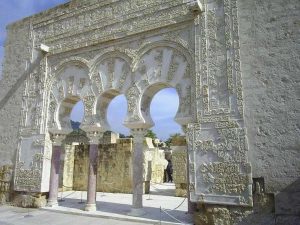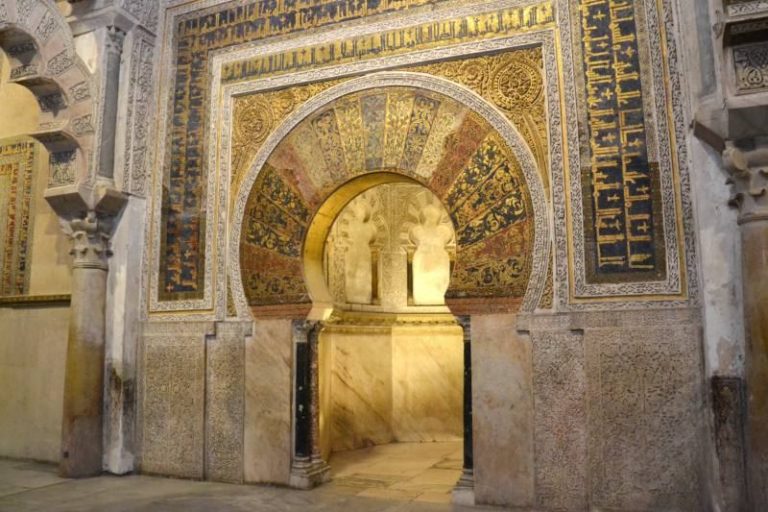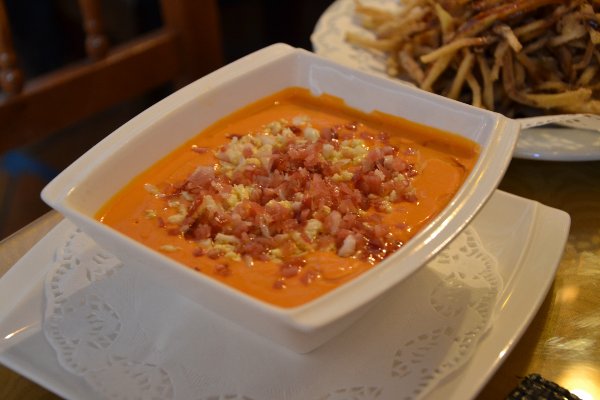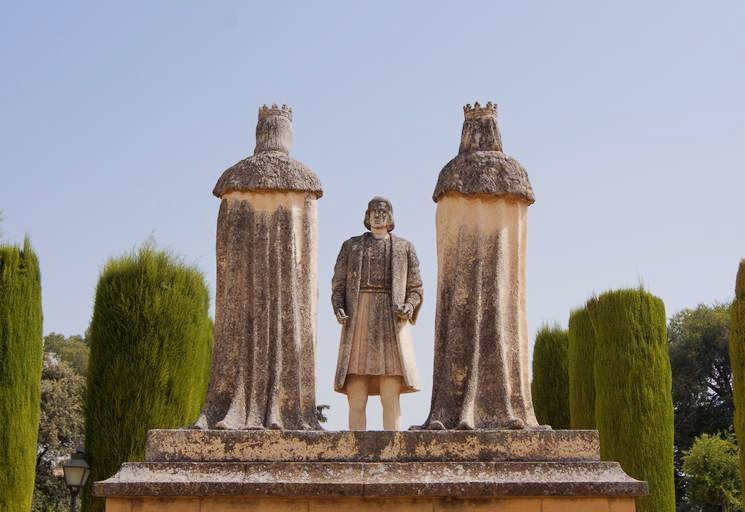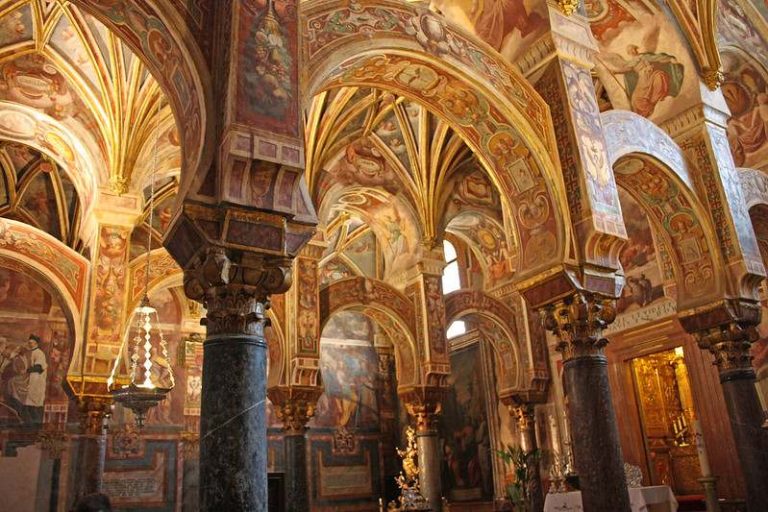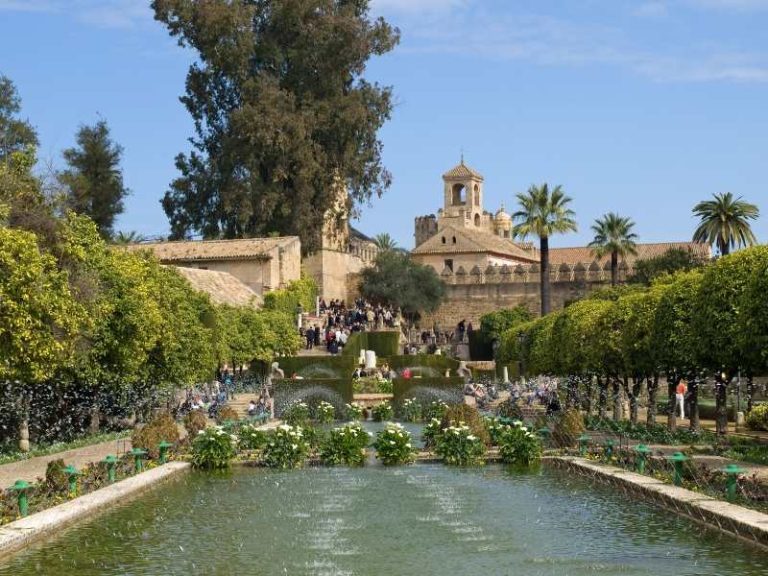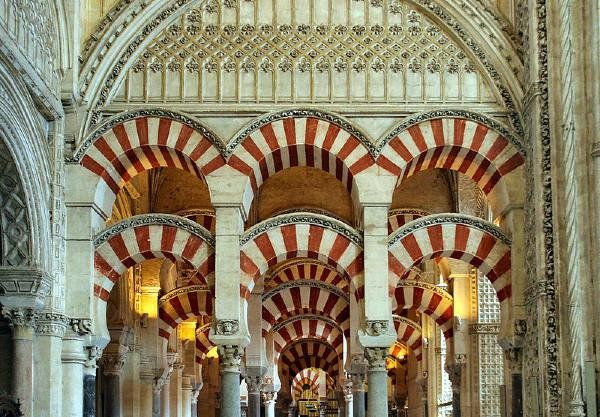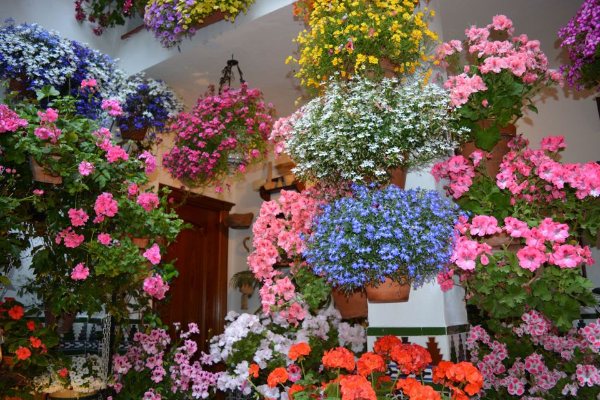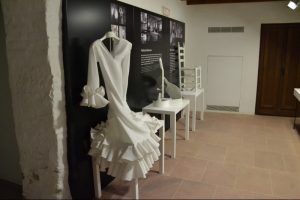
The Roman Bridge of Cordoba (El Puente Romano)
In the 1st century AD, the Romans built the first bridge in Cordoba that crossed the Guadalquivir River.
The Romans were a civilization that was constantly at war and therefore were true experts in building civil works: bridges, city walls, aqueducts, etc.
Of course, the place where Romans built this bridge was obviously not chosen at random. Romans chose the lowest and deepest part of the Guadalquivir River (called Baetis in Roman times) because it was easier to construct for Roman engineers.
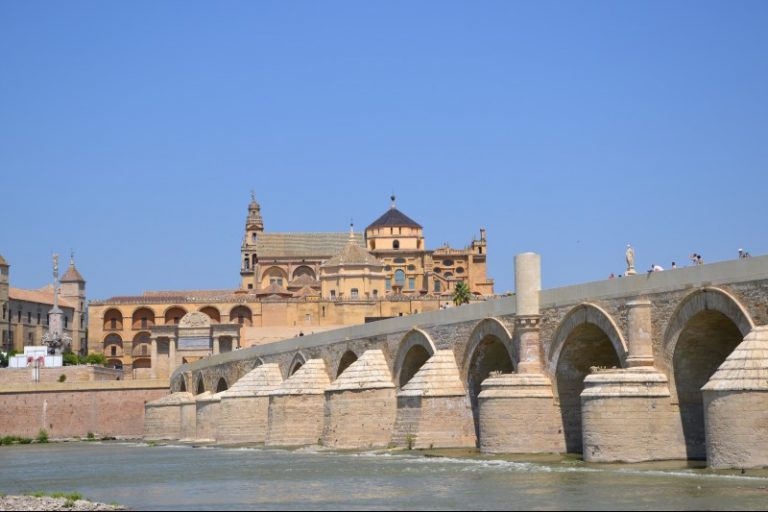
The stunning stone bridge measures 331 meters long (16 arches) which helps us understand the incredible work of the Roman engineers at that time. 2000 years later the Roman Bridge is still standing and serving the city.
At one end of the bridge we find a Triumphal Arch (16th century) where in the past there was one of the main gates to the Roman city of Cordoba. At the other end of the bridge, there is a tower which was built in Moorish times (Calahorra Tower) to control ship traffic on the river.

Table of Contents
The History of the Roman Bridge of Cordoba
Thanks to the archaeological sites and the texts of the Roman historians, we know that Cordoba had a large river port. However, we still do not know its exact location.
The huge agricultural resources became Cordoba an important commercial center in the region. So, the activity at the port of Cordoba was frenetic; every day boats loaded with goods (olive oil, wine, cereals, etc.) arrived at and departed from the quay. Boats departed from Cordoba to Seville and thence to Cadiz. From Cadiz boats reached the most remote parts of the Roman Empire (Britannia, Egypt, Jerusalem, etc.).
All activity of the port was controlled by a public official. Besides, there were private companies which collected taxes and were responsible for transport operations. Of course, all this activity demanded adequate infrastructure facilities: stores, offices, docks, roads, taverns, etc. Regrettably, none of this infrastructure has survived until our time.
Fortunately, a work of engineering as wonderful as the Roman Bridge of Cordoba transcended time. However, in the late Arab period (13th century), the bridge was severely damaged and ceased to be used as it was too dangerous to cross it.
Few centuries later, the Christians decided to rebuild the Roman Bridge since it was the most important access to the city and the only existing bridge in Cordoba. In the seventeenth century the Local Authorities placed a statue of Archangel Raphael on the bridge.
During the twentieth century the bridge underwent reconstruction from time to time. Despite this, cars and buses continued to use the bridge, weakening its structure. In 2008 the last reconstruction works were carried out and fortunately, traffic was suppressed. After this reconstruction, the bridge finally regained its original appearance.
The Roman Bridge of Cordoba in Game of Thrones
If you are a fan of Game of Thrones, we are sure that this bridge is familiar to you. The Roman Bridge of Cordoba was chosen to recreate the Long Bridge that crosses the River Rhoyne in the Free City of Volantis.
In the film the bridge is so large that it is covered in rows of multi-level buildings, taverns, stalls, etc. To be exact, the Roman Bridge of Cordoba has appeared twice in the Game of Thrones series: season 5 (episode 3) and season 6 (episode 7). Watch video below 😉
The perfect place to view Cordoba 's Skyline
If you cross the Roman Bridge of Cordoba, you will enjoy the best views of the Cordoba skyline from the other bank of the river (address: Avenida Fray Albino).
We recommend you visit this place especially at sunset when the lights of the Great Mosque of Cordoba, the Fortress of the Christian Monaschrs and the Roman Bridge illuminate the city. Without a doubt, there is no more romantic place in the city.
Roman Bridge and Cordoba Skyline at Sunset, Andalusia, Spain #Photography #Spain #Cordoba pic.twitter.com/6bsZqy4zte
— Anshar Photography (@anshar) January 24, 2020
Statue of the Archangel Raphael on the Roman Bridge of Cordoba
The statue of the Archangel Raphael on the Roman Bridge of Cordoba was designed in the 17th century. You should know that the Archangel Raphael is very important for Cordoba. In fact, if you visit the city centre you will see several sculptures and monuments dedicated to him. Even today, many “Cordobeses” baptize their children with the name of Rafael.
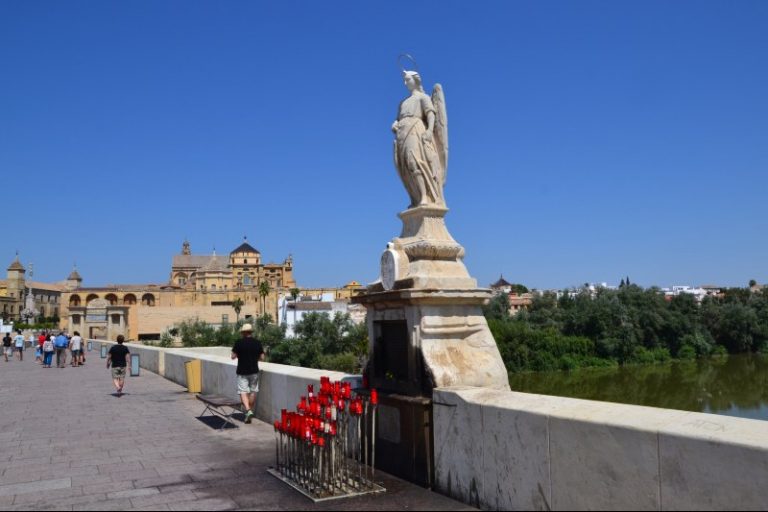
But perhaps you are thinking why the city of Cordoba venerates the Archangel Rafael in this way. The origin of this devotion to the Archangel Raphael dates to the seventeenth century when a terrible plague epidemic wreaked havoc in Cordoba. For months, the population was confined at home and Cordoba became a city gripped by fear.
One night, the Archangel Raphael appeared to the priest Andrés de Roelas and told him that the city would be saved. From this appearance the plague epidemic began to subside in Cordoba. Local people were sure that the Archangel Raphael had saved the city. From that very moment, the city of Cordoba would venerate the Archangel Raphael until today.
The only bridge in Cordoba for 2000 years
For nearly two thousand years, the Roman Bridge was the only bridge to cross Guadalquivir River in Cordoba. Fortunately, in the twentieth century the Local Government approved the construction of a new bridge, San Rafael Bridge (1953). Currently, the city has four more bridges:
- Miraflores Bridge
- Andalucia Bridge
- Abbás ibn Firnás Bridge
- Arenal Bridge
Guadalquivir River & Sotos de la Albolafia Nature Reserve
Guadalquivir river is no longer navigable in Cordoba since more than 500 years. However, from the water emerges a real nature reserve (“Sotos de la Albolafia”) inhabited by birds (ducks and herons), endemic plants and even a small community of otters. Undoubtedly, it is a unique enclave sculpted by Nature’s hand in the middle of the old town.
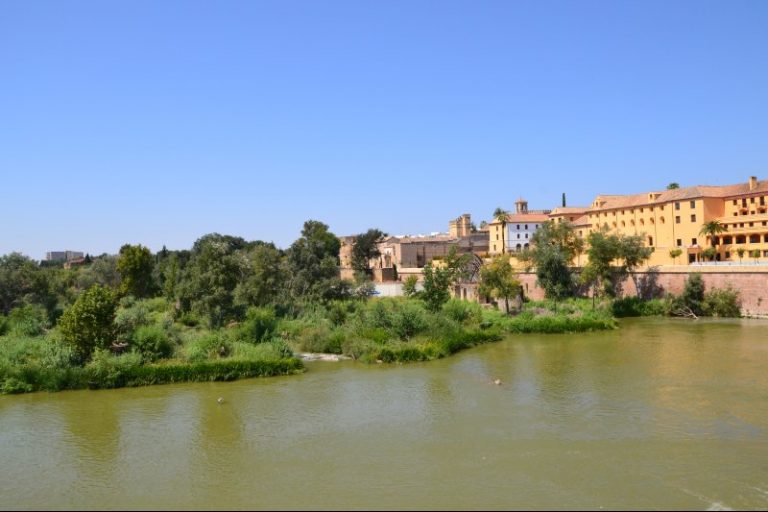
On the right bank of the river you can still see a waterwheel from Arab times. This mechanism provided water to the Royal Family who lived in the old Muslim Alcazar. When the Catholic Kings lived in Cordoba ordered to remove the waterwheel because the noise disturbed the Queen when she tried to sleep. After the stay of the kings in Cordoba, the waterwheel was reinstalled.
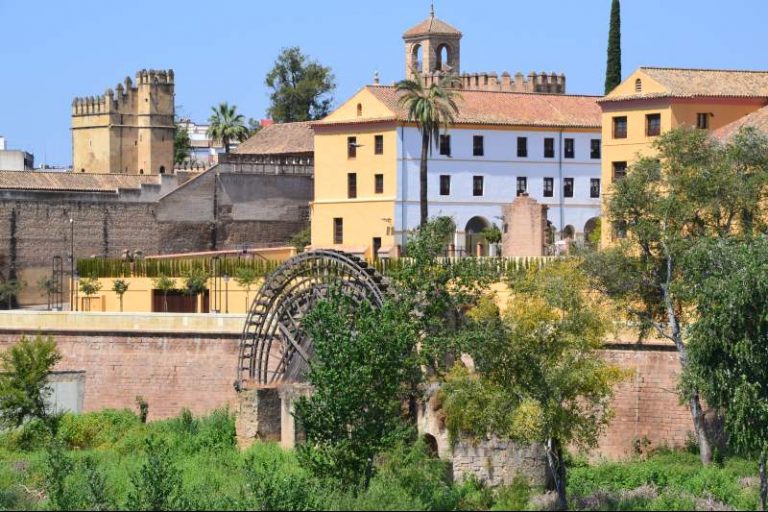
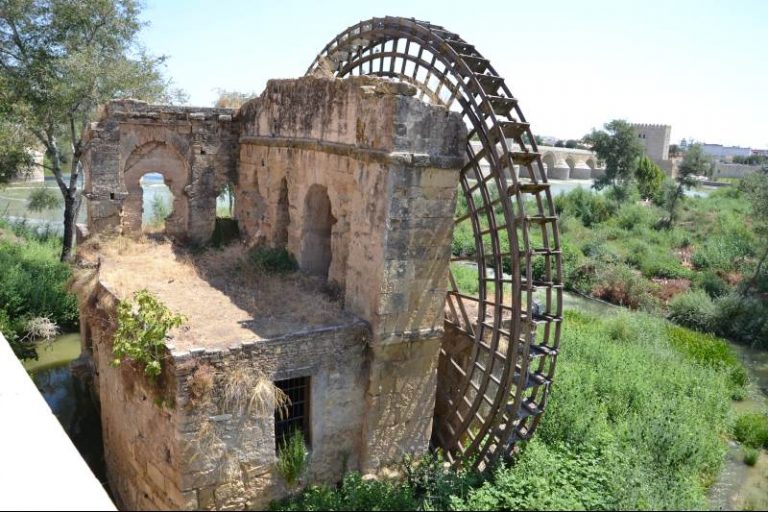
Useful information: Roman Bridge of Cordoba
Address:
Av. del Alcázar, s/n, 14003 Córdoba
Opening Hours The Roman Bridge of Cordoba
Open all year round 24 hours
Tickets Roman Bridge of Cordoba
No entrance tickets are needed. Completely free of charge.
Built in:
1st century AD (Roman times)
– Fortress of the Christian Kings: 500 meters (547 yards)
– Mosque-Cathedral of Cordoba: 250 meters (273,5 yards)
– La Corredera Square: 1 kilometer (1094 yards)
– The Synagogue of Cordoba: 700 meters (765,5 yards)
–Square of the Colt: 700 meters (765,5 yards)
– Caliphate Baths: 500 meters (547 yards)


